In celebration of Black History Month, the Special Collections reading room is currently displaying an exhibit on the Black Panther Party and the Black Power movement. The exhibit includes Black Panther newspapers and pamphlets published in the 1960s and 1970s, as well as earlier civil rights literature from the American Communist Party.
The Black Panther Party (originally the Black Panther Party for Self-Defense) was an African-American revolutionary socialist organization active in the United States from 1966 until 1982. It was founded in Oakland, California by Huey Newton and Bobby Seale. The partys inflammatory speech and advocation of violence for political gain made it extremely controversial, even within the Black Power movement. The Panthers were famous for organizing armed citizens patrols to evaluate behavior of police officers. Chants such as The Revolution has come, it’s time to pick up the gun. Off the pigs! pitted them against the establishment and increased racial tensions. The Panthers took advantage of a California law that permitted carrying a loaded rifle or shotgun as long as it was publicly displayed and pointed at no one. In their most famous incident, in May, 1967, 30 members entered the California State Assembly carrying their armed weapons- an event which was widely publicized, and which prompted a major overhaul in gun legislation. Despite the social program work performed by the Panthers, including the creation of a community school and free food programs, the criminal activities of Black Panther members and their confrontational, militant, and violent tactics against police caused the party to lose support in the civil rights community. To this day, the Black Panthers are infamous figures, representing a violent turn in the Black Power movement.
Special Collections owns six original issues of the Black Panther Partys official newspaper, The Black Panther, which are featured in this exhibit. The issues contain stories of injustice and police brutality, cartoons and information on how to carry out guerrilla attacks against the people and institutions the Black Panthers considered oppressive. Additionally, the front and back covers are adorned with the iconic art illustrations made by artist and Black Panther Minister of Culture Emory Douglas.
The pamphlets in the exhibit feature essays by important Black Panther leaders, including co-founder and self-appointed Minister of Defense Huey P. Newton. There is also a comic book titled The Adventures of Black Eldridge recounting the mythical exploits of Eldridge Cleaver. As Minister of Information, Cleaver was editor of the The Black Panther newspaper and exerted a lot of influence on the message and direction of the party.
Also included are pamphlets of earlier Black Power literature, all of which was affiliated with the American Communist Party. From the 1930s through the 1950s, the American Communists were at the forefront of promoting equal rights for African Americans and were intimately connected with the Black Power movement. One such pamphlet, entitled Equality, Land and Freedom: A Program for Negro Liberation, was published by The League of Struggle for Negro Rights, a group organized by the American Communist Party in 1930. The League campaigned for a separate black nation in the South, as well as against police brutality and Jim Crow laws. Langston Hughes, the famous Harlem writer and activist, became its President in 1934. Published between 1934 and 1935, this pamphlet sets out a Bill of Civil Rights for the Negro People decades before the Civil Rights Act of 1964.
Another pamphlet, The Road to Liberation for the Negro People, was published in 1937 by the Daily Worker, a Communist newspaper. The Meaning of Black Powerwas written by James E. Jackson Jr., an official in the American Communist Party. During the McCarthy era in the early 1950s, he was indicted on charges of conspiracy and spent five years in hiding. In this pamphlet, published in 1966, Jackson works to define Black Power as a movement to bring about equal rights for African Americans by mobilizing these populations to vote and secure their rightful share of government power.
These are artifacts from a volatile period of American history as we struggled to achieve equality, documents that demonstrate the intensity and passion of those working for African American freedom and recognition.The exhibit will be up through the end of the month, so come take a look!
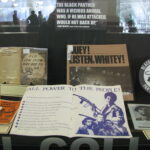
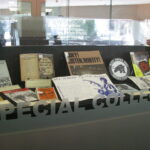
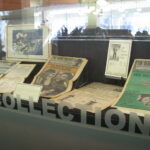
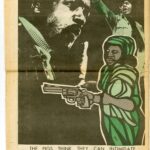
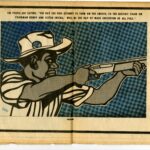
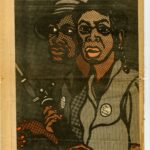
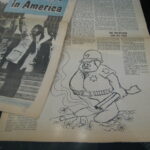
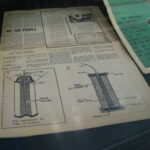
2 thoughts on “Power to the People! The Revolutionary Literature of the Black Panthers”